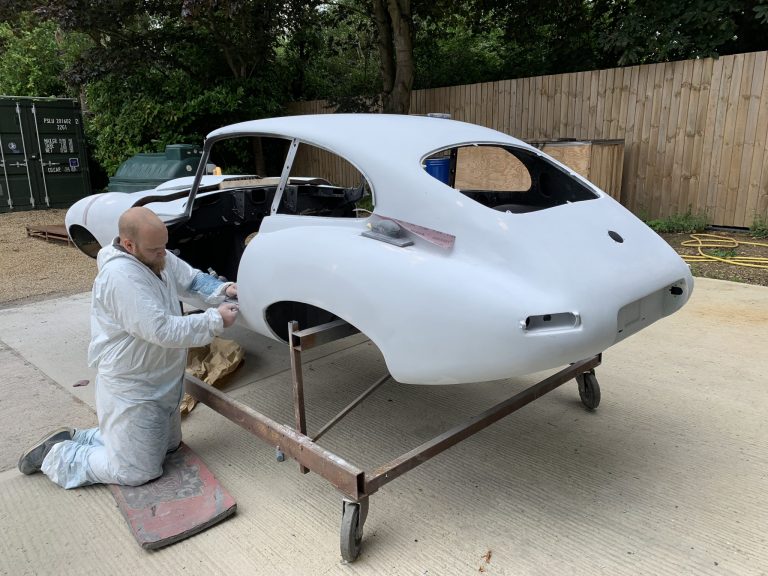
Preparing Racecar for Primer
Final moments of preparation before Chris puts our 1967 Jaguar E-Type race recreation into prime. We are hoping to have the body shell in colour


Final moments of preparation before Chris puts our 1967 Jaguar E-Type race recreation into prime. We are hoping to have the body shell in colour
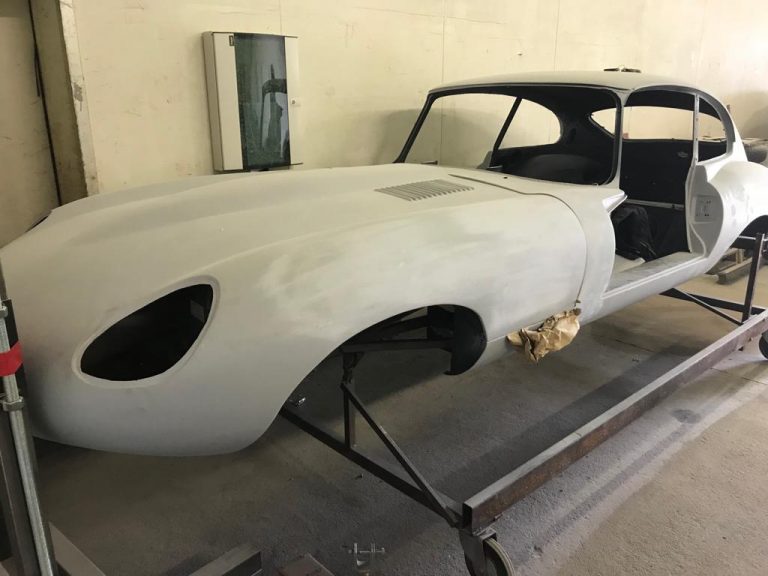
With the aim of having our E-Type race car body shell painted in time for this year’s Bridge Classic Cars Classic & Sports Car &
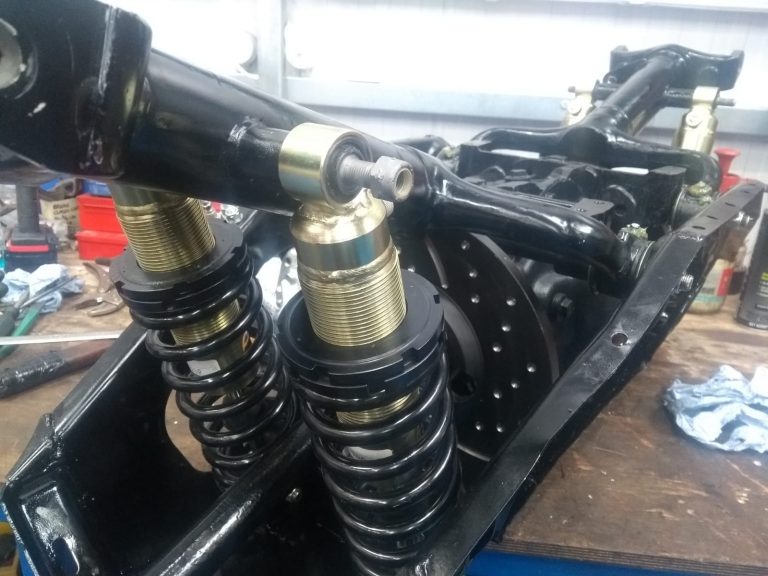
Building up a couple of Jaguar E-Type rear set ups at the same time this week. First up, we have our E-Type race car back
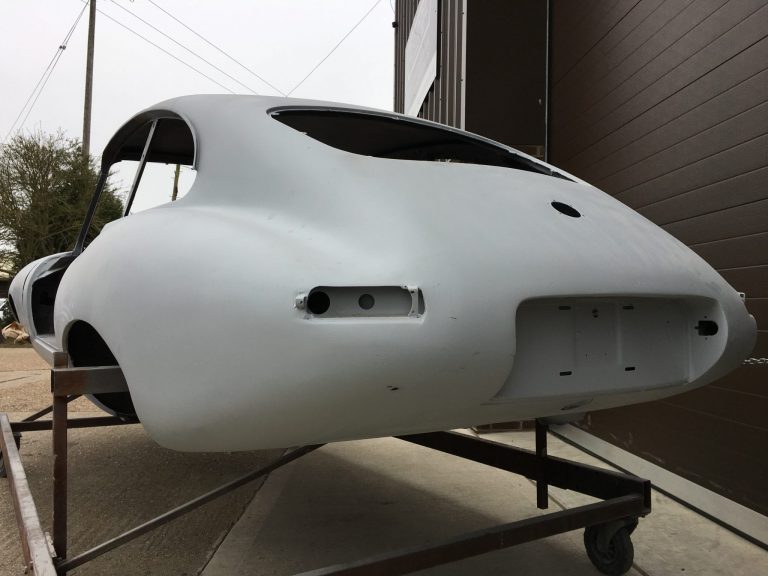
Our 1967 Jaguar E-Type Racing Series 1 will soon be rolled into the paint shop for the new colour transformation. Colours have now been chosen,
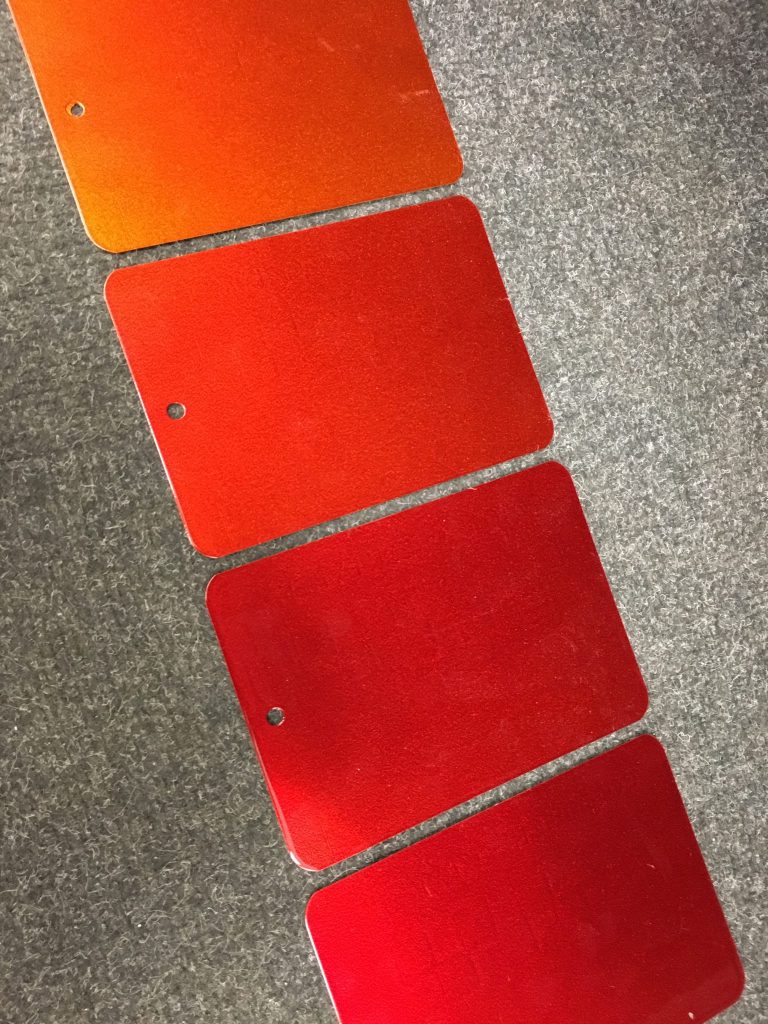
This is a unique 3 stage colour we are testing and trialling. Most notably seen on the new McClaren, it is known as Volcano Orange
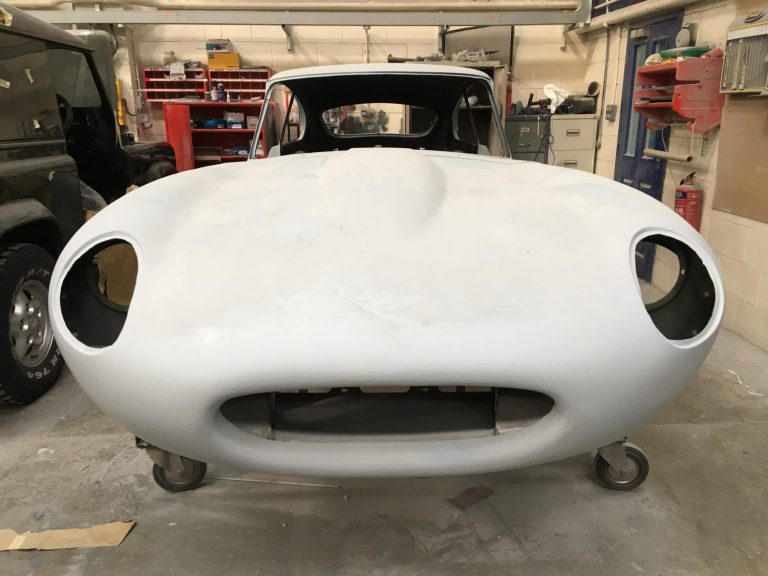
Colours have been chosen, designs have been finalised and Monday 4th February 2019 is the day we’ll see our 1967 Jaguar E-Type racing car enter

We are now starting to prepare our racing E-Type running gear ready to put her back on her wheels. Pete and Gordon are currently on

We are now very close to our amazing 1967 Jaguar E-Type racing project being ready for the full respray colour change. The exact colour has
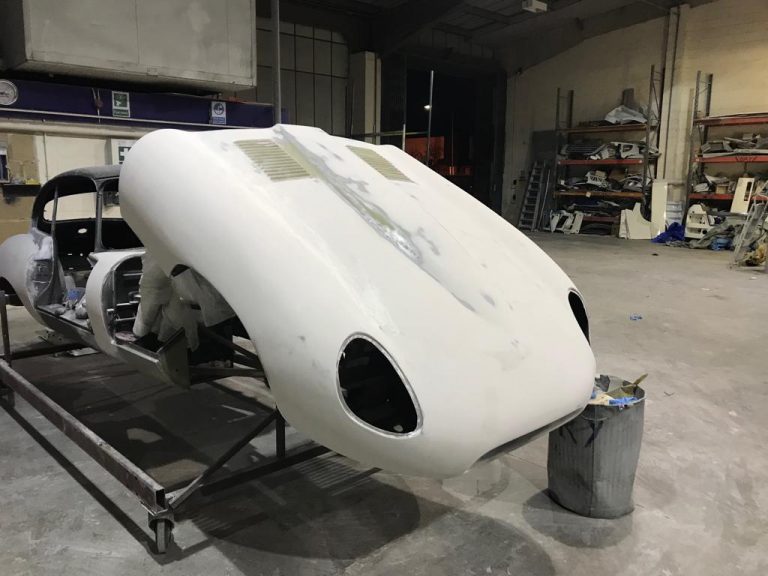
Work on preparing the bodyshell of our 1967 racing E-type is well underway by our friends at Simon Morris Commercial Vehicle Paintshop and Repairs. They are
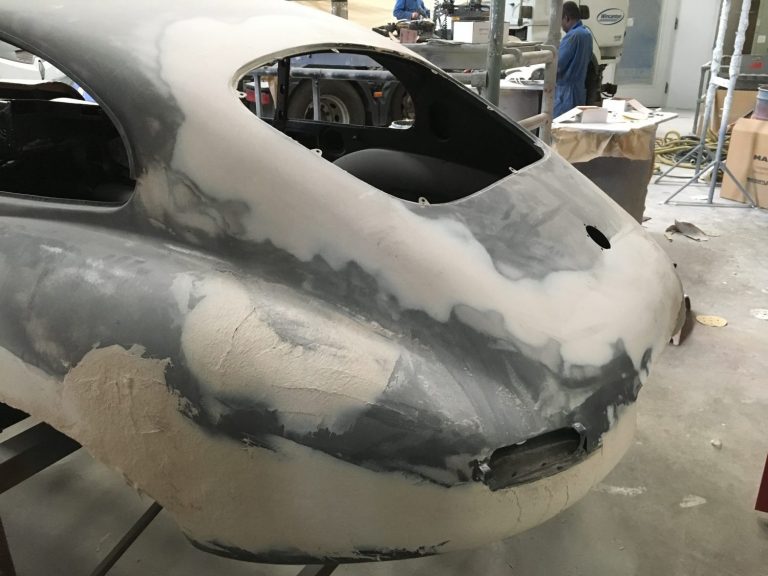
We are now in the final stages of the preparation on our 1967 Jaguar E-Type Racing prototype. the boot lid is now sealed. Within the
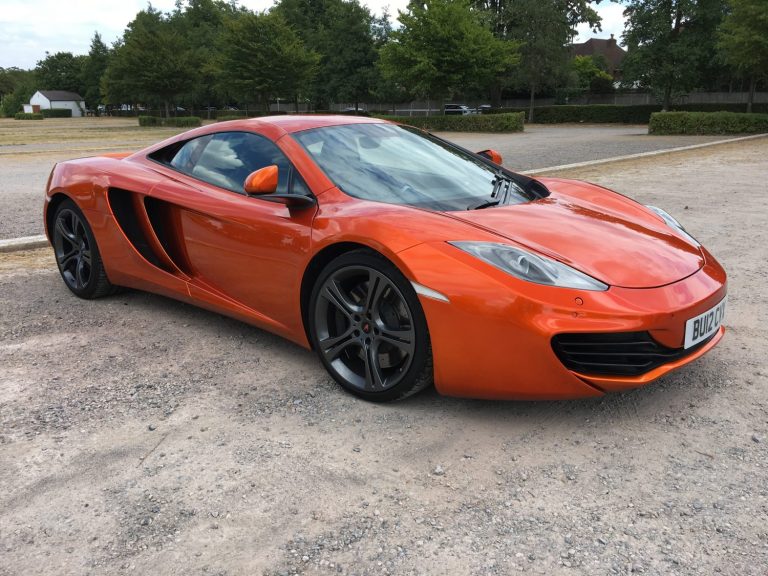
Having set up for tomorrow’s Summer Classic Car at Sandown Racecourse we were just leaving the site to head to the hotel when we come

[vc_row][vc_column][vc_column_text]Andy has been busy stripping back the rear suspension components. He’s blasted each individual unit and prepared ready for paint. Once back from the paint
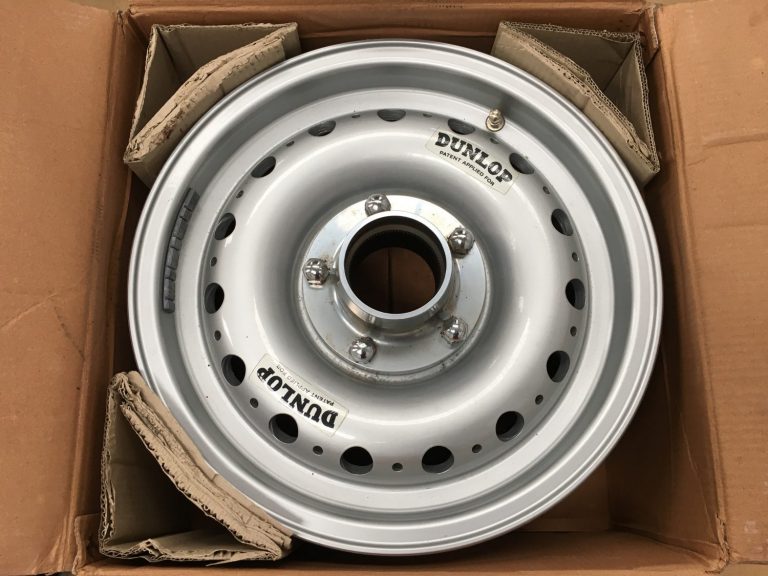
Our 1967 Jaguar E-Type Race Car has some new shoes in the form of a set of original spec Dunlop Mag DCM Racing wheels as
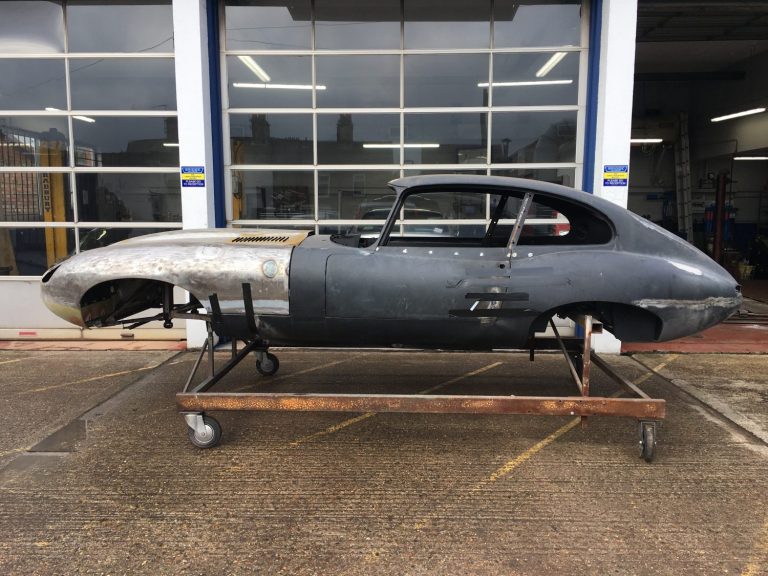
The day has come for our 1967 Jaguar E-Type race replica to head off to the paint shop for the full preparation and respray. Although

[vc_row][vc_column][vc_column_text]Work is almost complete on the de-seaming of our Jaguar E-Type race replica. The alignment of the bonnet has been the most challenging part of
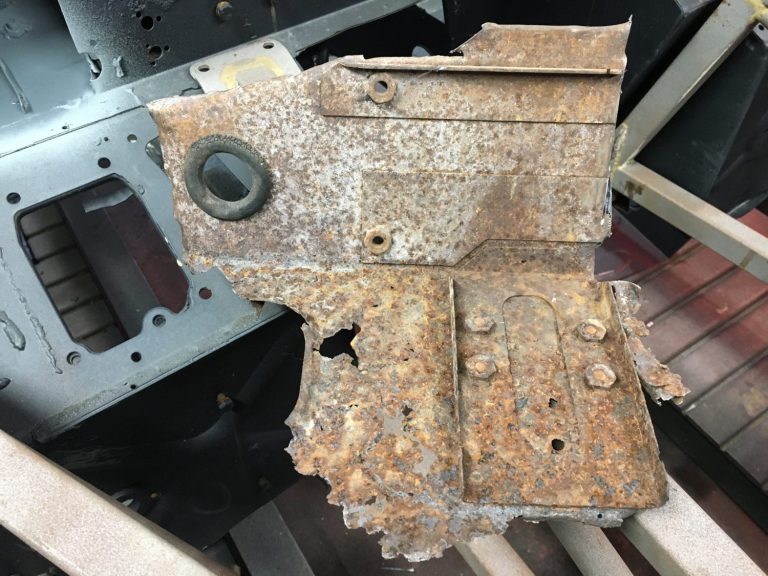
The inside of the bulkhead was in desperate need of repair so having cut out the affected area we have now replaced with new before
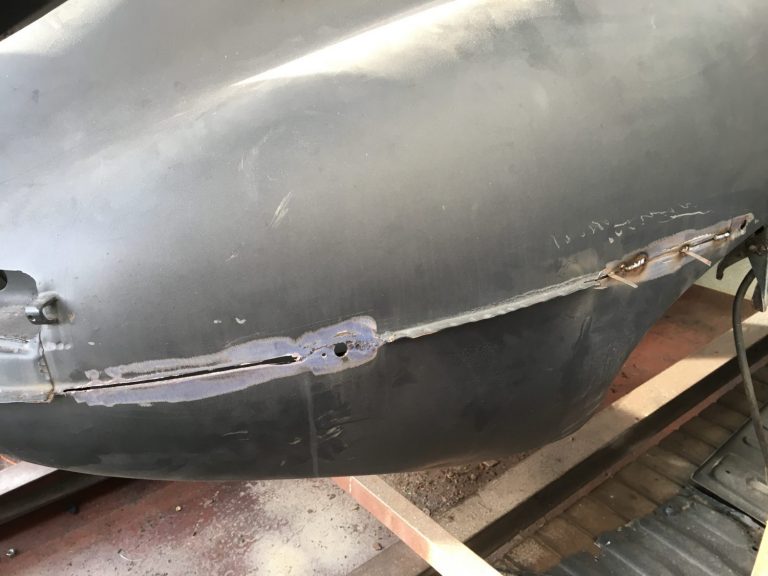
Work is progressing nicely on the re-shaping and alterations of our 1967 Jaguar E-type race replica. We expect the weld work to complete within the

Our main objective, at this stage in the build, is to de-seam the car and weld up the boot area. The bonnet shaping needs attention
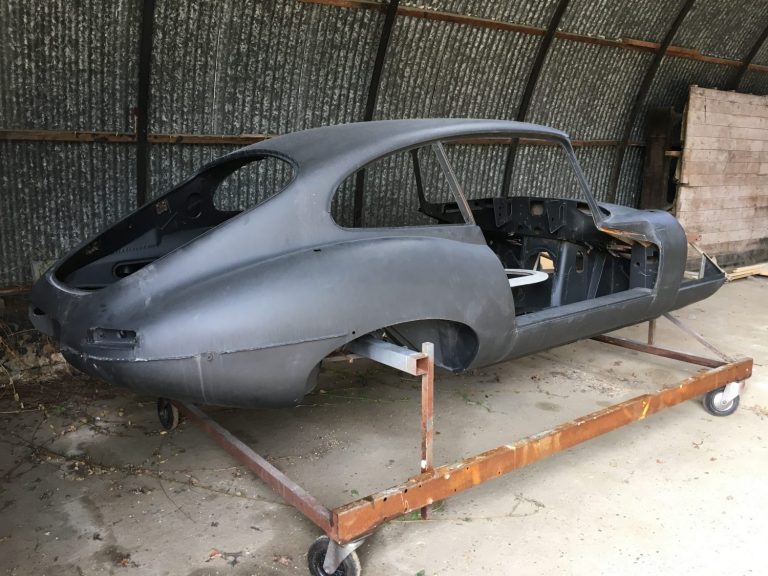
It’s been some time since we last looked at the racing E-Type but we are soon in a position to be able to start on
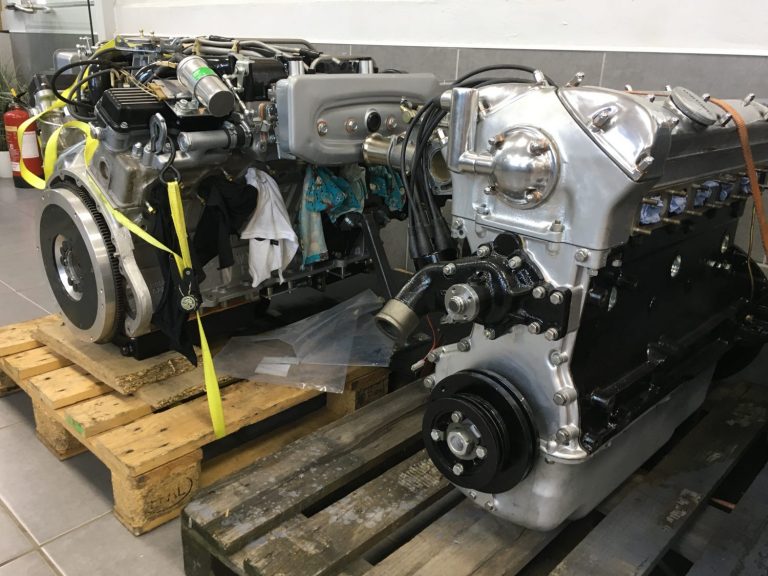
Our 1967 Jaguar E-Type racing series engine is now complete, ready and waiting to be fitted. We have carried out a full rebuild of the
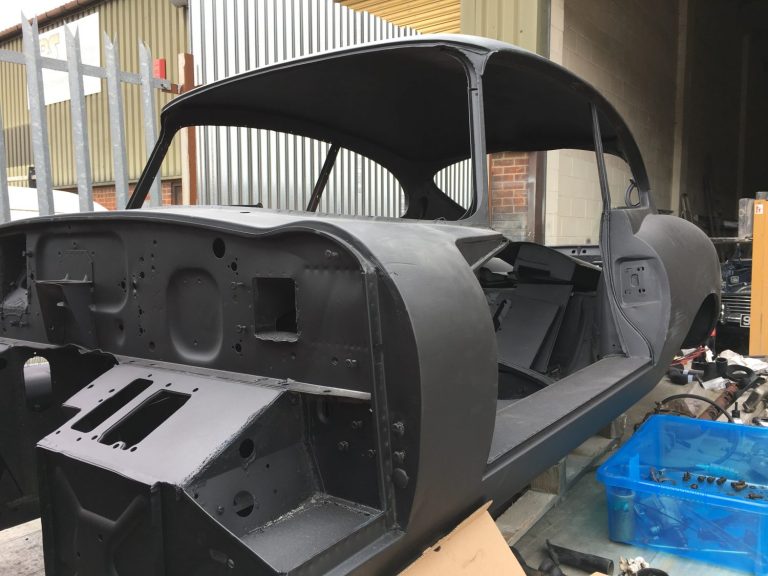
The shell of our racing 1967 Jaguar E-Type has returned having been been wet blasted. Wet blasting, similarly to dry blasting, is the use of
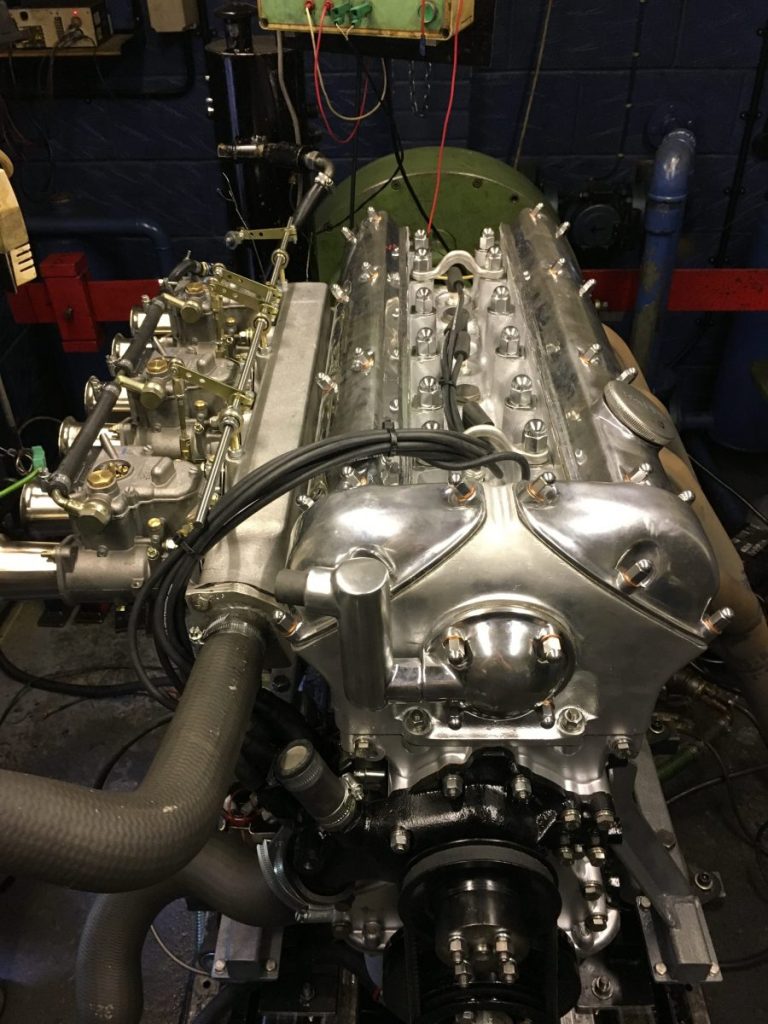
[vc_row][vc_column][vc_column_text]On Friday Craig and Asa spent the afternoon with Ady at Scholar Engineering to test run our 1967 Jaguar E-Type Race Replica Engine. The 4.2 E-Type
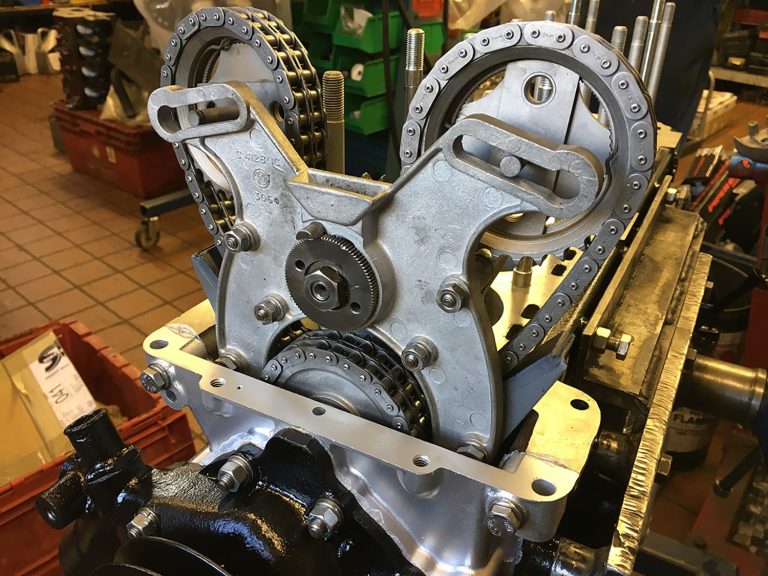
[vc_row][vc_column][vc_column_text]Popped in to see the Ady and the guys at Scholar this afternoon to catch up on a few tasks we are working together on.
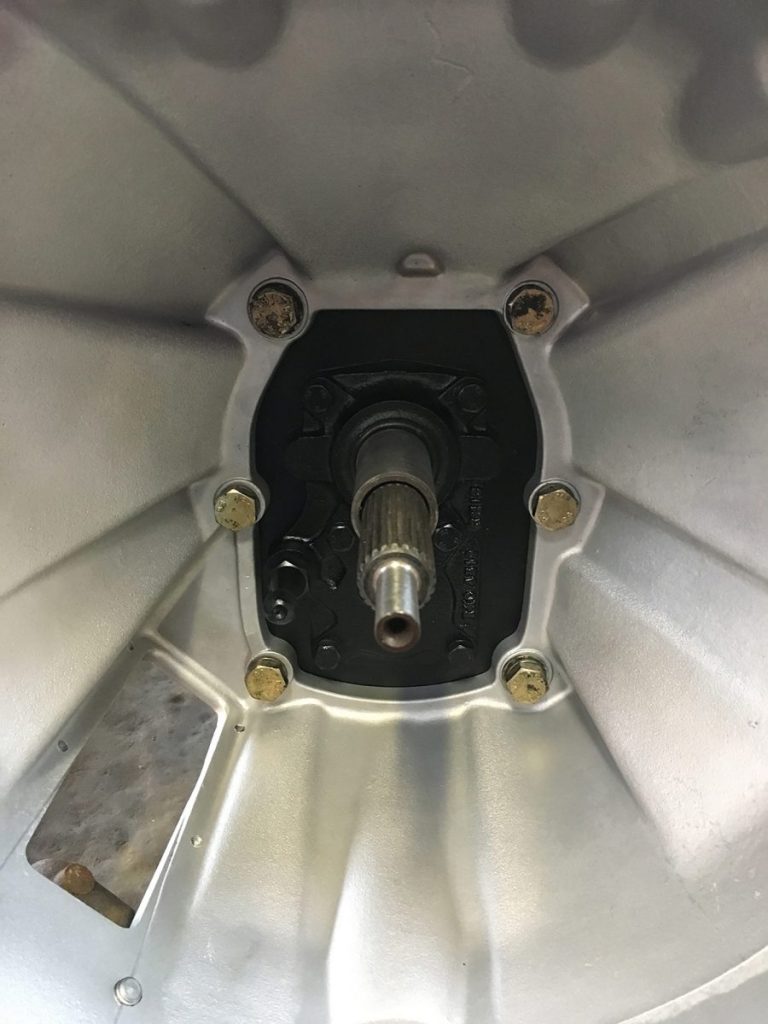
Our 1967 Jaguar E-Type road race car will be fitted with a Rover SD1 5 speed gearbox. The gearbox has been stripped, cleaned and repaired.

[vc_row][vc_column][vc_column_text]We’ve just had confirmation from SNG Barratt that our missing headlight diaphragm is now in stock and will be shipped to us very shortly. Once this

Work is now underway removing the seams on our 1967 Jaguar E-Type Racing Series bonnet. Breaking the mould of a traditional Jaguar E-Type we are

[vc_row][vc_column][vc_column_text]The front underpin is now fitted, as is the front light diaphragms. Just a few more welding issues to tackle and Laura will be done
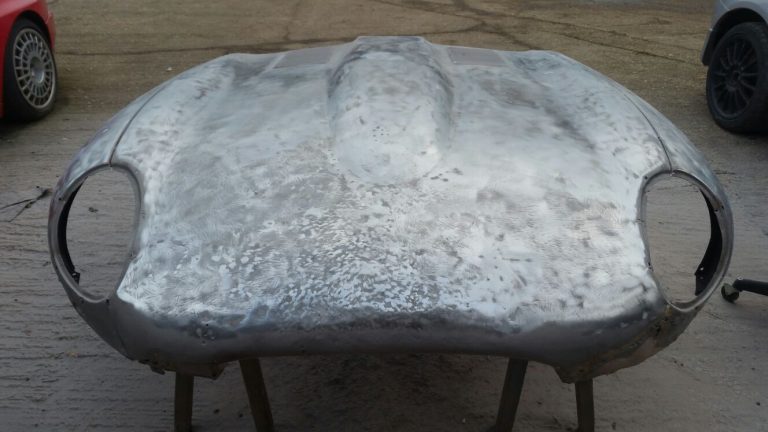
The weather managed to hold out enough for Laura to completely remove all of the paint from the Jaguar E-Type bonnet. As you can see
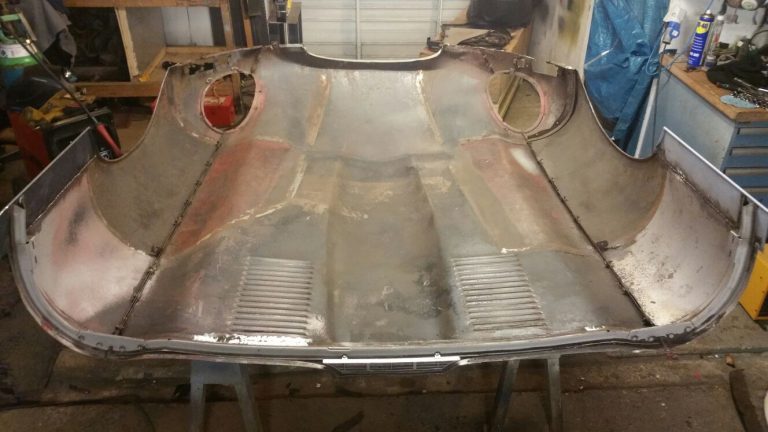
[vc_row][vc_column][vc_column_text]Laura is still working through removing the rotten areas of the bonnet and replacing with new steel. As our Jaguar E-Type is being built to
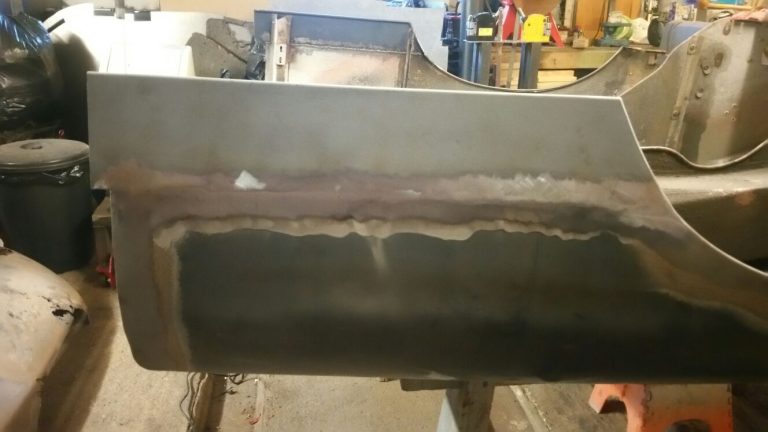
[vc_row][vc_column][vc_column_text]With the new bonnet underside repair kits now with us, Laura has been able to remove the corroded areas around the bottom edging of the
Final moments of preparation before Chris puts our 1967 Jaguar E-Type race recreation into prime.
We are hoping to have the body shell in colour in time for our Classic & Sports Car & Bike Show on Sunday 28th July 2019.
Look forward to seeing you all there…
With the aim of having our E-Type race car body shell painted in time for this year’s Bridge Classic Cars Classic & Sports Car & Bike Show Darren is really up against it preparing and re-shaping the intricate lines. Not to affect our current projects our race car is worked on in our spare times and at weekends which means it is taking some time to complete.
Let’s hope we can get the colour on in time for the show…
Building up a couple of Jaguar E-Type rear set ups at the same time this week. First up, we have our E-Type race car back axle.
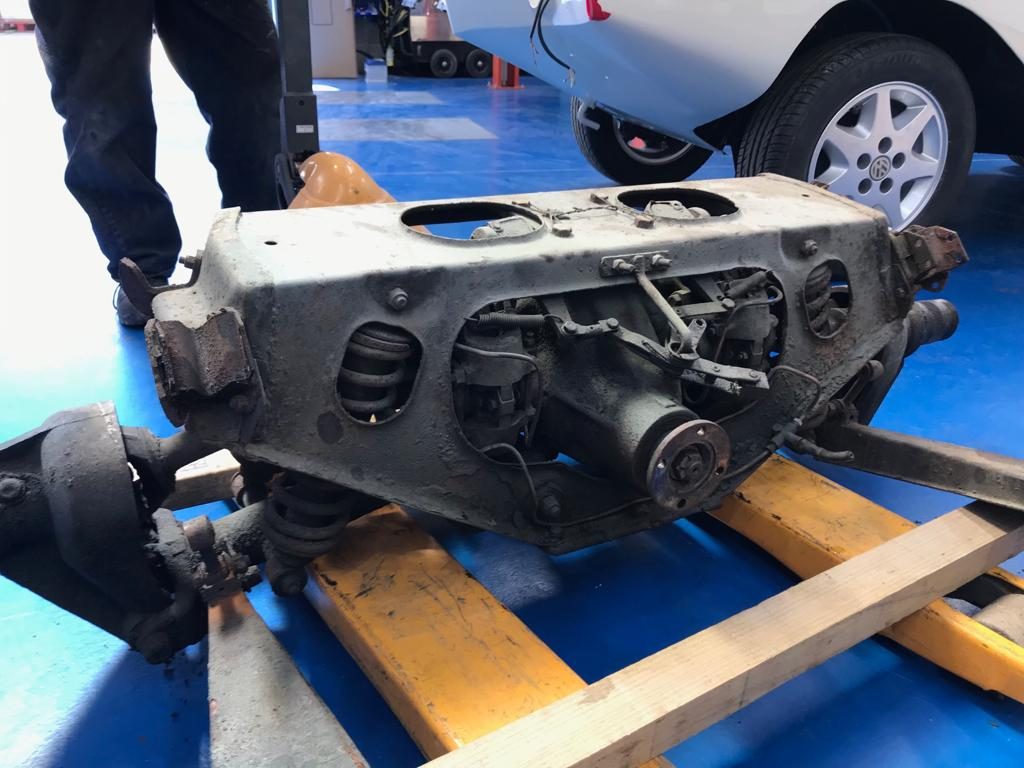
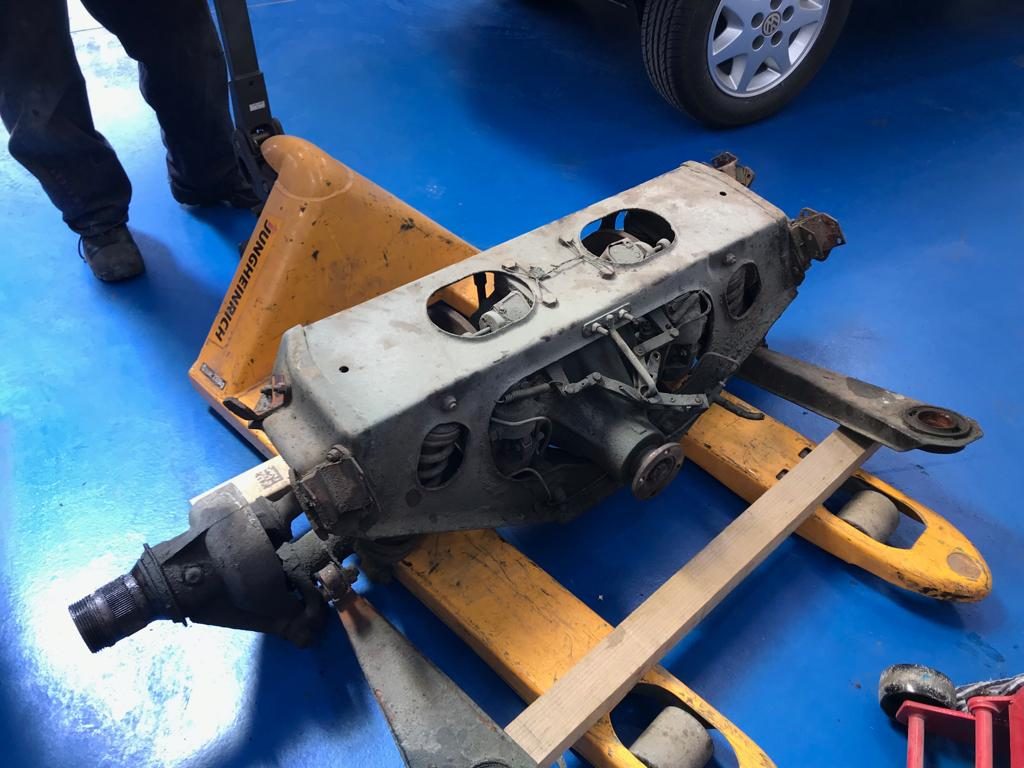
Secondly we have our up rated back axle with adjustable shocks, all new bushes and bearings.
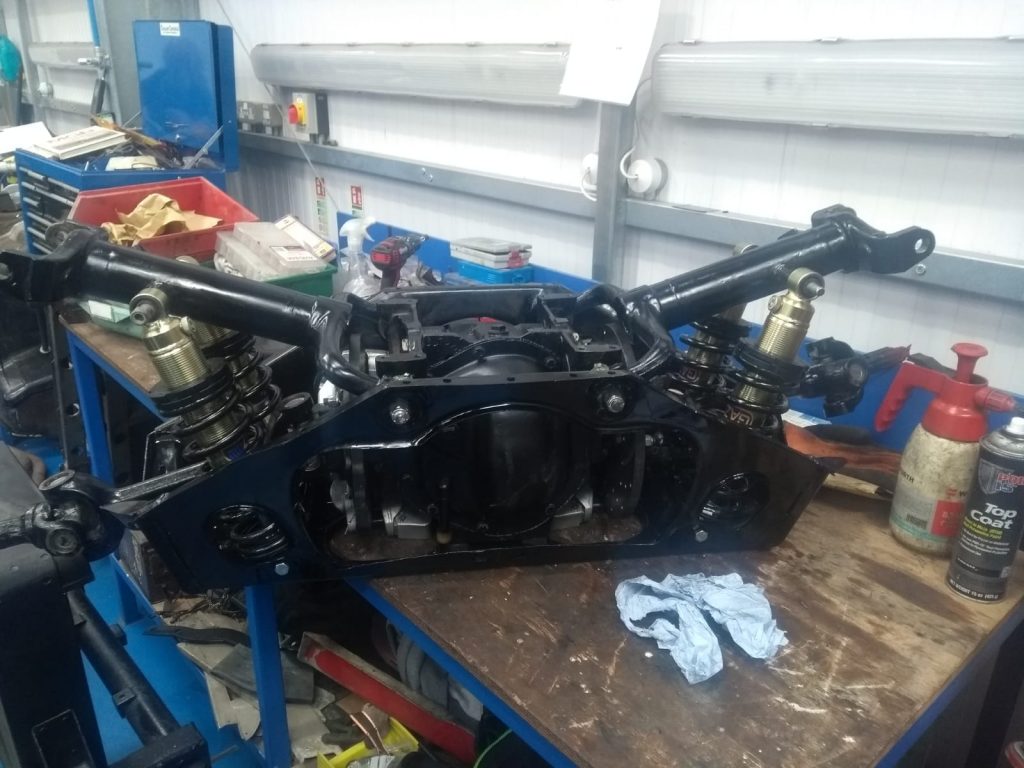
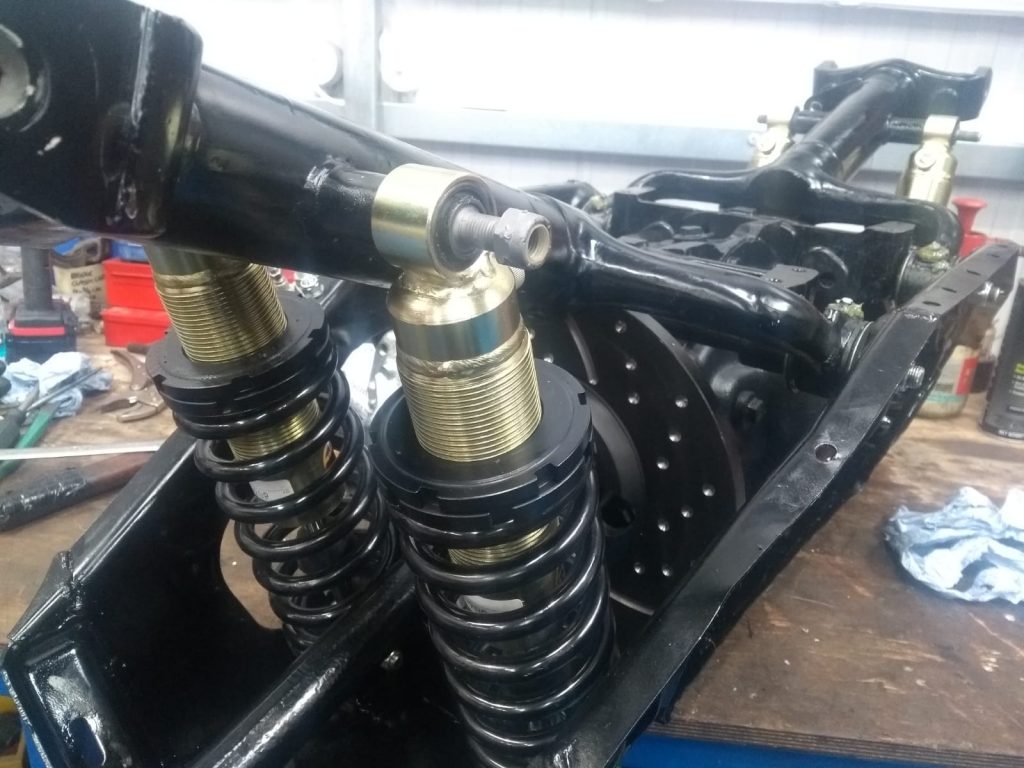
Our 1967 Jaguar E-Type Racing Series 1 will soon be rolled into the paint shop for the new colour transformation.
Colours have now been chosen, samples have been generated and we are happy to proceed with a bit more shaping and preparation before we can apply the top coat.
We estimate a week’s work left in preparation before paint.
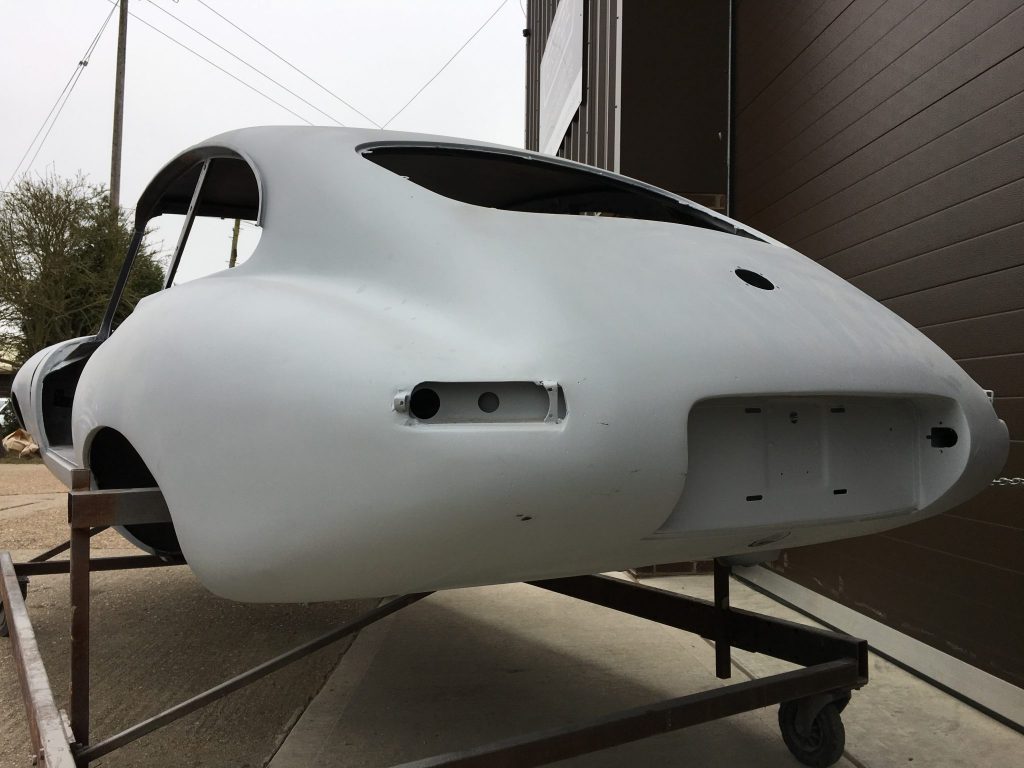
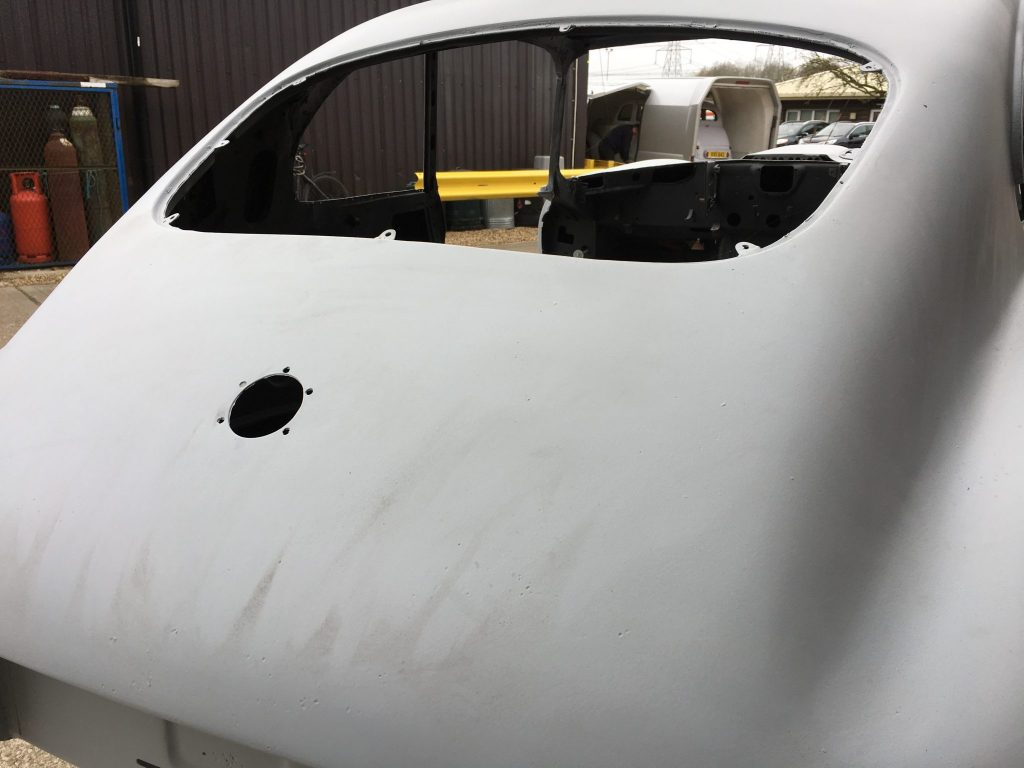
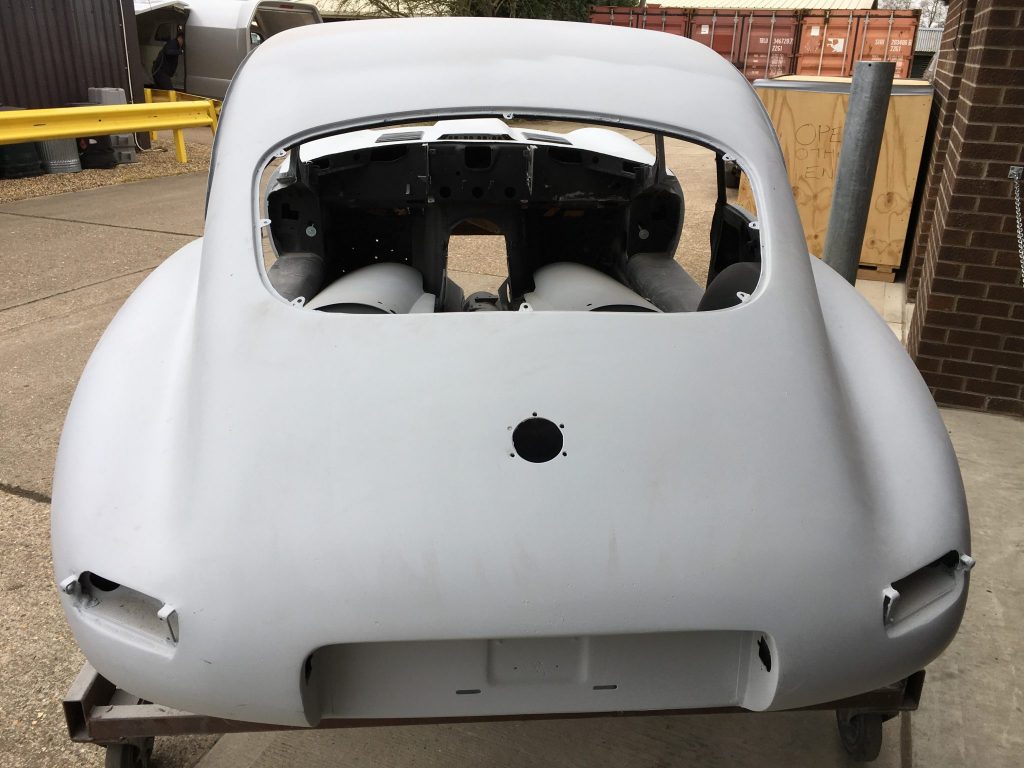
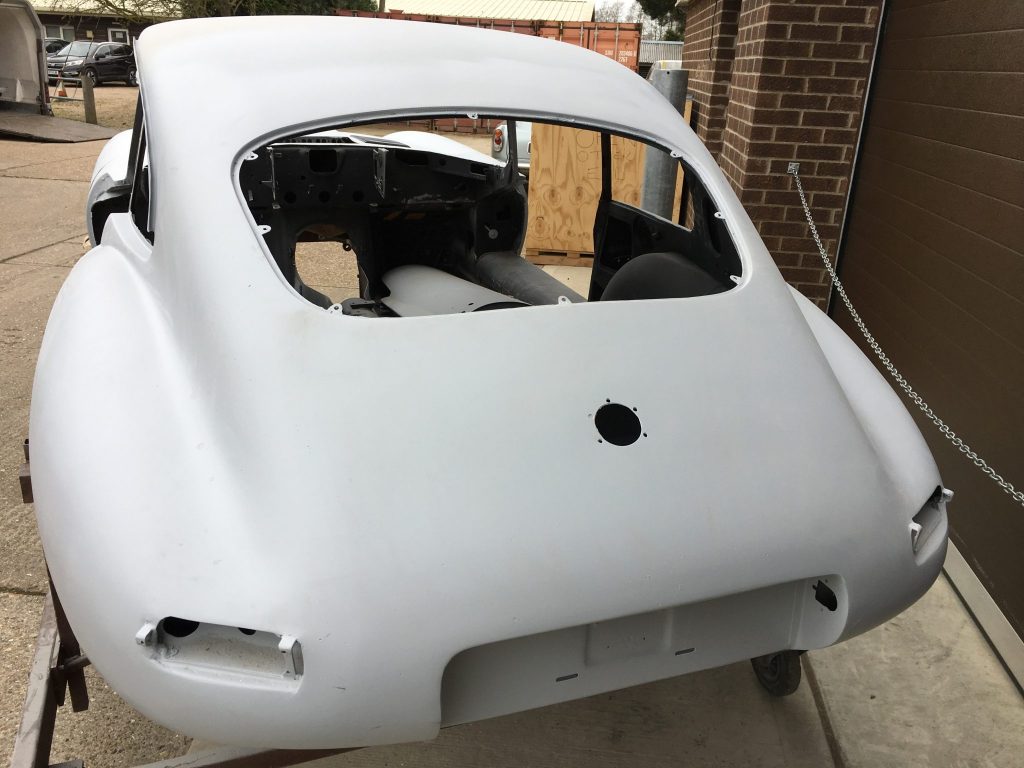
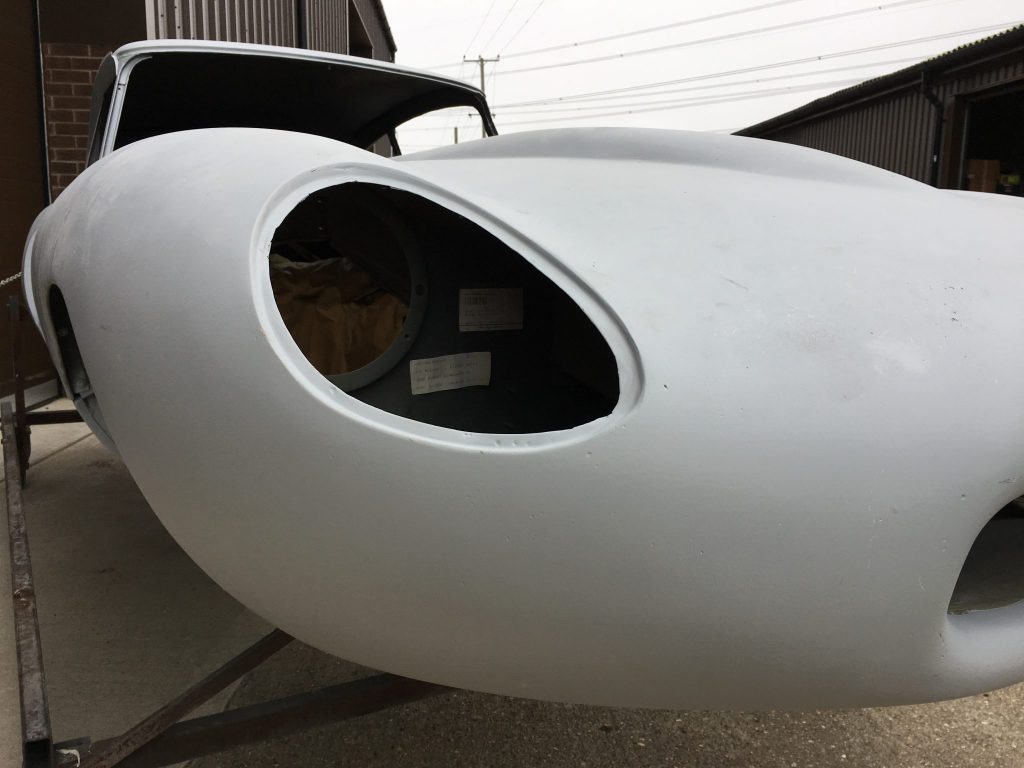
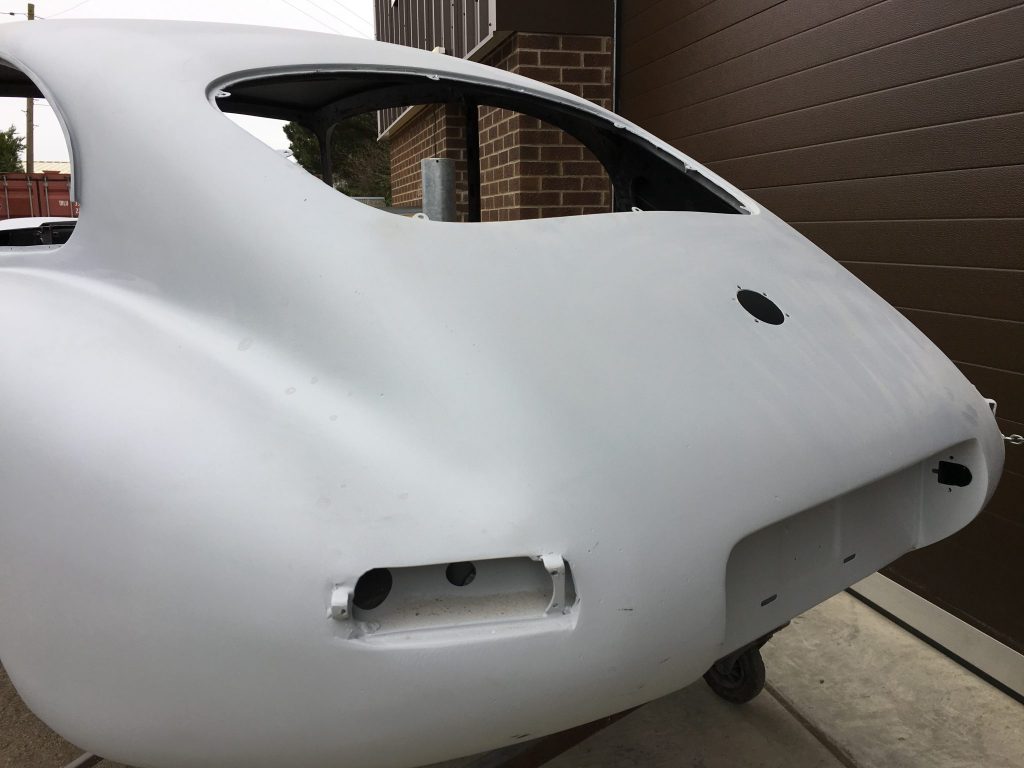
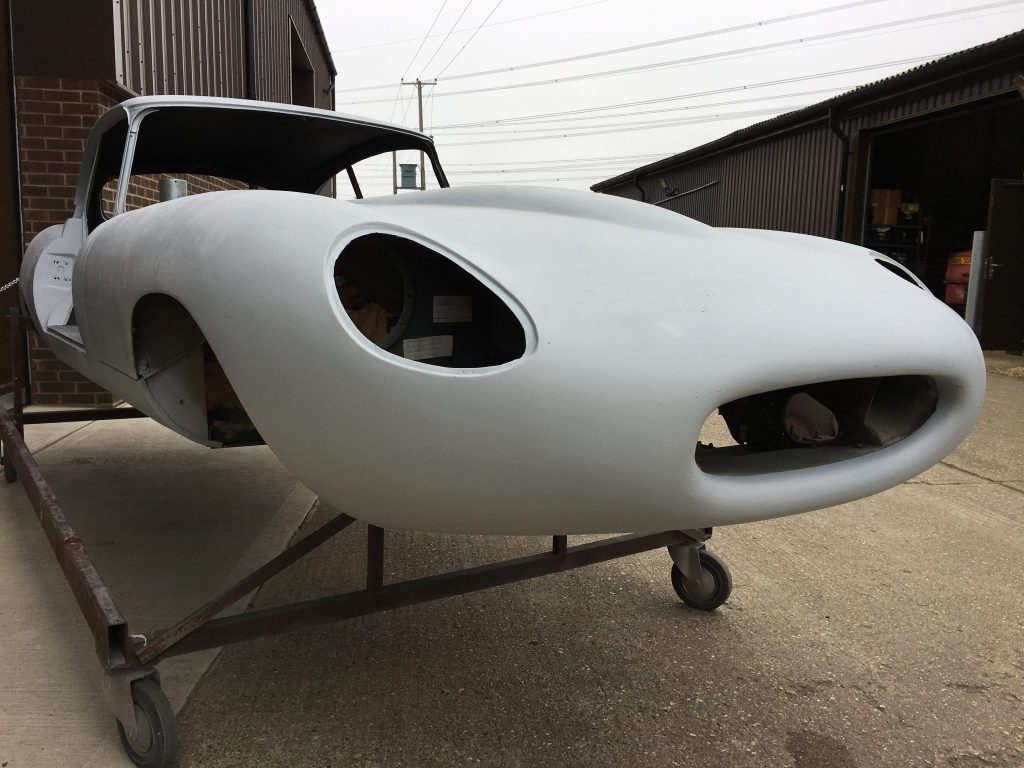
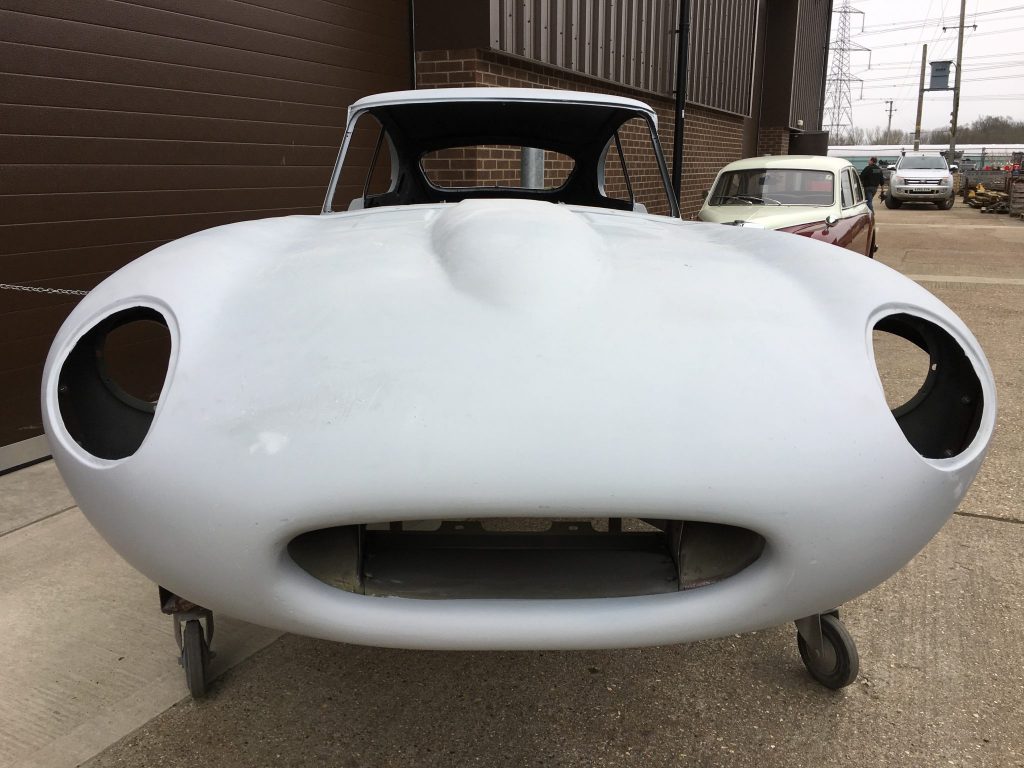
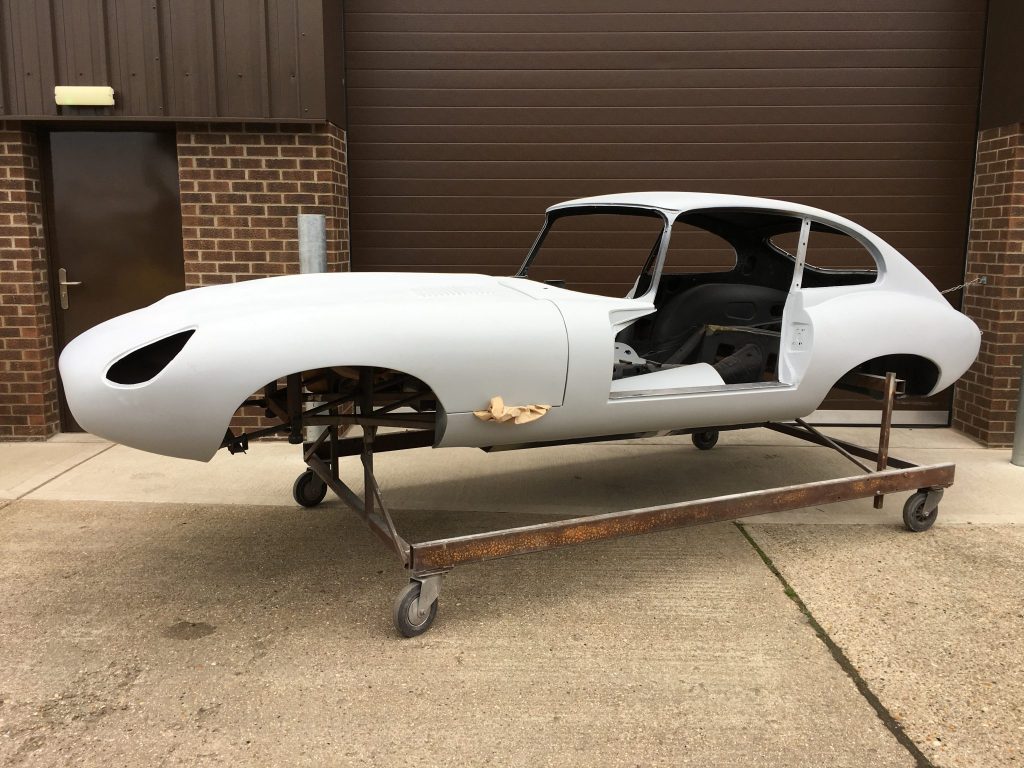
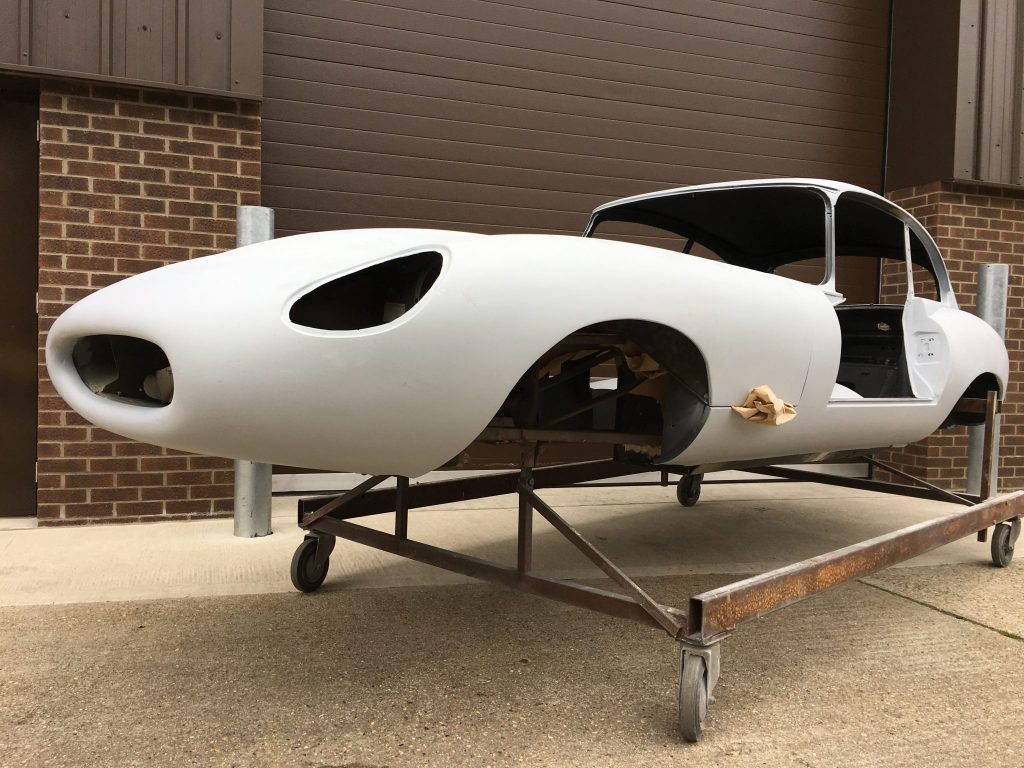
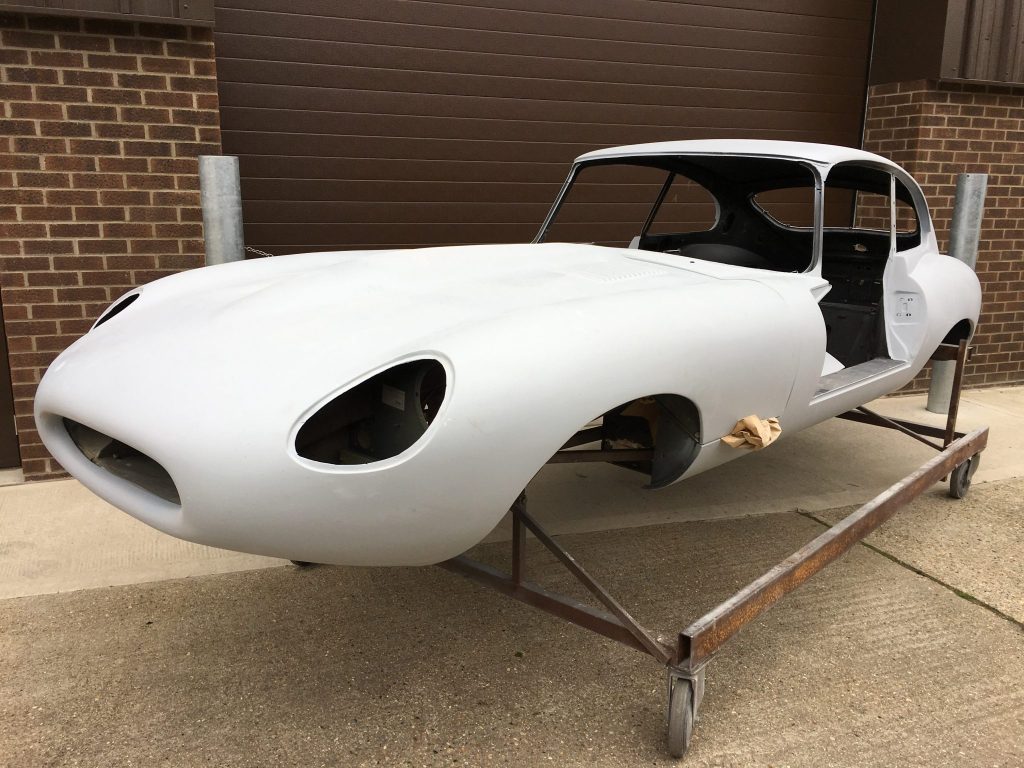
This is a unique 3 stage colour we are testing and trialling. Most notably seen on the new McClaren, it is known as Volcano Orange and consists of a silver base coat followed by a top coat orange applied in varying levels.
Below, from left to right we have 2 coats, 3 coats, 4 coats and finally 5 coats. As you can see, the more coats applied, the deeper and more red the colour becomes.
We are also looking to experiment with a new glass beaded lacquer which is applied at the final stage to give an intense glass effect to the finished product.
Once the colour has been chosen, will will test it against the Magnetic Grey which is part of the desired two tone finish we are looking for.
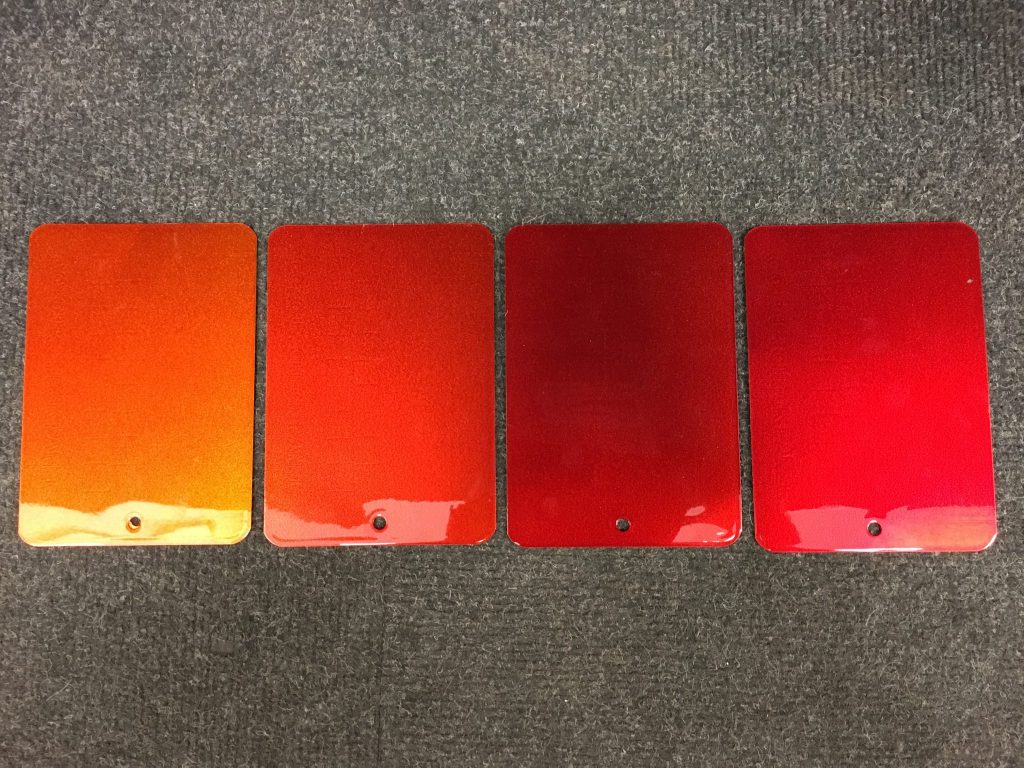

Colours have been chosen, designs have been finalised and Monday 4th February 2019 is the day we’ll see our 1967 Jaguar E-Type racing car enter the preparation room ready for paint.
This is a very exciting project for us being our own car for us all to drive and enjoy. bring on the summer!!
We are now starting to prepare our racing E-Type running gear ready to put her back on her wheels.
Pete and Gordon are currently on their way to Stuart and the guys at Agriblast in Stanton to collect various parts as well as deliver our racing E-Type parts for blasting.
We are now very close to our amazing 1967 Jaguar E-Type racing project being ready for the full respray colour change. The exact colour has now been chosen but will be kept under wraps for the big reveal.
The body preparation, to this stage, has been carried out by the guys at Simon Morris in Ipswich. We have agreed to take back control once the car is ready for paint for our own paint shop to carry out the respray.
Work on preparing the bodyshell of our 1967 racing E-type is well underway by our friends at Simon Morris Commercial Vehicle Paintshop and Repairs.
They are working on the preparation before handing her back to us, here at Bridge Classic Cars, to be painted in our paint shop.
We aim to have our body shell returned early 2019.
We are now in the final stages of the preparation on our 1967 Jaguar E-Type Racing prototype. the boot lid is now sealed. Within the next few weeks we are able to accept the body shell into our paint shops ready for the transformation to begin.
Having set up for tomorrow’s Summer Classic Car at Sandown Racecourse we were just leaving the site to head to the hotel when we come across this stunning Volcano Orange McLaren MP4-12C.
Such a stunning colour and has given us some great ideas for future projects.
The McLaren MP4-12C, later known simply as the McLaren 12C, is a sports car designed and manufactured by McLaren Automotive. It is the first production car wholly designed and built by McLaren since the McLaren F1, which ended production in 1998. The car’s final design was unveiled in September 2009, and was launched in mid-2011.
The MP4-12C features a carbon fibre composite chassis, and is powered by a mid-mounted McLaren M838T 3.8-litre V8, twin-turbo engine developing approximately 592 hp (441 kW; 600 PS) and around 443 lb⋅ft (601 N⋅m) of torque. The car makes use of Formula 1-sourced technologies such as “brake steer”, where the inside rear wheel is braked during fast cornering to reduce under steer. Power is transmitted to the wheels through a seven-speed dual-clutch transmission.
A convertible version of the car called the MP4-12C Spider, renamed the 12C Spider in 2012, is also available. In February 2014, McLaren announced the related 650S, with revised bodywork, upgraded engine and other technical improvements. In April 2014, McLaren announced the end of production of the 12C
Development
McLaren started developing the car in 2007 and secretly purchased a Ferrari 360 to use as a test mule. The mule called MV1 was used to test the 3.8-litre twin-turbocharged V8 engine. The car also featured side vents for additional cooling which were later incorporated in the final production model. Later in the year, the company purchased an Ultima GTR to test the braking system and suspension components, that mule was called the MV2. The space frame and body of that car were modified in order to accommodate the new components. Later another prototype was purchased which was another Ferrari 360 dubbed the MV3 which was used to test the exhaust system. McLaren then built two prototypes themselves called CP1 and CP2 incorporating the Carbon Monocell monocoque which were used for testing the heat management system and performance. The final car was unveiled to the public on 9 September 2009 before the company’s launch in 2010.
Design
In 2008, McLaren hired Frank Stephenson as design director for their reborn production car project.
As with the McLaren F1, carbon fibre is used extensively in the vehicle to minimise weight. The MP4-12C weighs 1,301 kg (2,868 lb) dry.
The chassis is based around a F1 style one-piece carbon fibre tub, called the Carbon MonoCell, weighing only 80 kg (176 lb). The MonoCell is made in a single pressing by using a set of patented processes, using Bi-Axial and Tri-Axial carbon fibre multiaxial fabrics produced by Formax UK Ltd. with the MonoCell manufactured by Carbo Tech in Salzburg, Austria. This has reduced the time required to produce a MonoCell from 3,000 hours for the F1 and 500 hours for the Mercedes-Benz SLR McLaren, to 4 hours for the MP4-12C.
The car has a conventional two side-by-side seating arrangement, unlike its predecessor the McLaren F1 which featured an irregular three seat formation (front centre, two behind either side). To make up for this however, the car’s central console is narrower than in other cars, seating the driver closer to the centre. Interior trim and materials can be specified in asymmetric configuration – known as “Driver Zone”.
Engine
The car is powered by the M838T 3.8-litre twin-turbo V8 engine, designed and developed by McLaren, Ilmor and Ricardo. The design of the engine was based on a racing engine which was designed and developed by Tom Walkinshaw Racing for the IRL Indy Car Championship but never raced. However, other than the 93 mm bore, little of that engine remains in the M838T. It produces 592 bhp (441 kW; 600 PS) and 443 lb⋅ft (601 N⋅m) of torque. It has a redline of 8,500 rpm, with 80% of torque available at just 2,000 rpm. When first announced, McLaren claimed that it would have a higher horsepower to carbon dioxide emission ratio than any internal-combustion engine available at the time.
McLaren announced a small number of improvements to become available in October 2012, with the option to be retrofitted to existing cars free of charge. The engine now produces 616 bhp (459 kW; 625 PS) and no change to the CO2 emissions which remain at 279 g/km. This power output has also become standard on the 2013 model.
The M838T engine is manufactured for McLaren at the Ricardo Shoreham Technical Centre in West Sussex.
Transmission
The engine is connected to a seven-speed automatic dual-clutch gearbox made by Graziano Oerlikon. Dubbed the “Seamless Shift Gearbox” or SSG, the gearbox features a system dubbed “Pre-Cog” that allows the driver to preselect the next gear by lightly tapping the paddle.
Performance
DragTimes.com posted a YouTube video of a stock McLaren 12C accelerating from 0 to 60 mph in 2.8 seconds and from 0 to 100 mph in 6.0 seconds. DragTimes.com also recorded a quarter mile time for the McLaren 12C of 10.27 seconds at 218 km/h (135 mph), the 3rd fastest verified time for a stock production car at the time. The manufacturer has a claimed top speed of 207 mph (333 km/h) but a top speed of 346.6 km/h (215 mph) was achieved in the MP4-12C Spider, which is 3 mph “slower” than the coupe. The Coupe (in reality) can do 218.61 mph (352 km/h). It can brake from 200 km/h (124 mph) to a complete stop in under 5 seconds. Braking from 100 km/h (62 mph) to zero can be done in under 30 metres (98 ft), around seven car lengths.
2011 McLaren MP4-12C has a power to weight ratio of 2.39 kg (5.27 lb) per horsepower.
2013 McLaren 12C has a power to weight ratio of 2.29 kg (5.05 lb) per horsepower.
[vc_row][vc_column][vc_column_text]Andy has been busy stripping back the rear suspension components. He’s blasted each individual unit and prepared ready for paint.
Once back from the paint shop the rear suspension can be rebuilt ready for the imminent return of the painted body.[/vc_column_text][/vc_column][/vc_row][vc_row][vc_column][vc_gallery type=”image_grid” images=”19779,19780,19781,19782,19783,19784,19785,19786,19787,19788,19789,19790″][/vc_column][/vc_row]
Our 1967 Jaguar E-Type Race Car has some new shoes in the form of a set of original spec Dunlop Mag DCM Racing wheels as used at LeMans.
The day has come for our 1967 Jaguar E-Type race replica to head off to the paint shop for the full preparation and respray.
Although we are now on the 11th hour, our choice of colours are yet to be finalised.
[vc_row][vc_column][vc_column_text]Work is almost complete on the de-seaming of our Jaguar E-Type race replica.
The alignment of the bonnet has been the most challenging part of this particular stage but Asa has conquered the beast and everything lines up as expected.
The boot lid is now a permanent fixture and the bodywork for the new fuel filler has been shaped.
All that’s left to do now is clean down any imperfections before the body preparation and paint.[/vc_column_text][/vc_column][/vc_row][vc_row][vc_column][vc_gallery type=”image_grid” images=”18159,18158,18157,18156,18155,18154,18153,18152,18151,18150,18149,18148,18147,18146,18145,18144,18143,18142,18141,18140,18139,18138,18137,18136,18135,18199,18200,18201,18202,18203,18204,18205,18206,18207,18208,18209,18210,18211,18212,18213,18214,18215,18216,18217,18218,18219,18220,18221,18222,18223,18224,18225,18226,18227,18228,18229,18230,18231,18232,18233,18234,18235,18236,18237,18238,18239,18240,18241″][/vc_column][/vc_row]
The inside of the bulkhead was in desperate need of repair so having cut out the affected area we have now replaced with new before sealing back up. Although this is a section that will not be clearly visible it is always out intention to complete the work correctly.
Work is progressing nicely on the re-shaping and alterations of our 1967 Jaguar E-type race replica. We expect the weld work to complete within the next two weeks ready for the paint shop to do their magic.
Colours are yet to be confirmed as we have changed our minds a good few times but for now it is great to see the car being de-seamed, the replacement floors and the fuel filler being removed.
Our main objective, at this stage in the build, is to de-seam the car and weld up the boot area. The bonnet shaping needs attention as does the doors. Once we are happy that we’ve completed the task to the standard required we will start to prepare the body ready for the respray.
It’s been some time since we last looked at the racing E-Type but we are soon in a position to be able to start on de-seaming and re-designing the exterior bodywork.
Our 1967 Jaguar E-Type racing series engine is now complete, ready and waiting to be fitted.
We have carried out a full rebuild of the engine including the upgraded weber carburettors.
Almost everything has been rebuilt, reconditioned or replaced: exhaust valves, inlet valves, cam buckets, valve guides, VS2 valve springs, head gasket, spark plugs, core plugs, leads, distributor, cap, coil, clamps, timing chain kit, oil pump, FC288 oil filter conversion, oil thrower, main bearings, big end bearings, thrust washers, pistons, clutch.
We’ve reconditioned the lightened flywheel, fitted new flywheel bolts and dowels, block studs, chrome nuts, oil pump seals, exhaust manifold studs, lock tab, small end bushes, crank bungs, tab washers, gaskets, oil pump lock washers, banjo bolts, oil pipe, water pump, rear seals conversion, balance rotating assembly, face block, face head, overhauled water pump, resized big ends, shim head, mild port on head, unleaded conversion, polish cam covers and breather, grind crank, strip and rebuild dyno.
The shell of our racing 1967 Jaguar E-Type has returned having been been wet blasted.
Wet blasting, similarly to dry blasting, is the use of an abrasive material and compressed air. However, unlike dry blasting, wet blasting uses liquid to enhance the levels of surface finish that can be achieved.
The benefit of including water is a much smoother and more consistent finish.
Wet blasting was developed by Norman Ashworth in the early fifties; the introduction of water was originally as a response to the banning of silica in sand blasting although the benefits of wet blasting quickly became clear.
By lubricating the abrasive particles in a buffer of water Norman found that there was a much more even flow across the surface when using wet blasting systems. This has its advantages in that less damage is done to the substrate and any abrasive action is consistent across the whole surface.
[vc_row][vc_column][vc_column_text]On Friday Craig and Asa spent the afternoon with Ady at Scholar Engineering to test run our 1967 Jaguar E-Type Race Replica Engine.
The 4.2 E-Type engine has been fitted with upgraded Weber Carburetor for optimum performance.
During the test we were able to achieve just under 250bhp but Ady is confident with a little tweaking and a new distributor he’ll be able to achieve much more.
All in all, a very successful first run…[/vc_column_text][/vc_column][/vc_row][vc_row][vc_column][vc_gallery type=”image_grid” images=”11199,11200,11201,11202,11203,11204,11205″][/vc_column][/vc_row][vc_row][vc_column][vc_column_text]Here are a few videos of the engine being warmed up and tested at Scholar Engineering[/vc_column_text][/vc_column][/vc_row][vc_row][vc_column][vc_video link=”https://www.youtube.com/watch?v=T6NqCTBweFE”][/vc_column][/vc_row][vc_row][vc_column][vc_video link=”https://www.youtube.com/watch?v=wwfqViaXmp4″][/vc_column][/vc_row][vc_row][vc_column][vc_video link=”https://www.youtube.com/watch?v=8GgAj7g_rd0″][/vc_column][/vc_row][vc_row][vc_column][vc_video link=”https://www.youtube.com/watch?v=YK0AX3LvgIY”][/vc_column][/vc_row][vc_row][vc_column][vc_video link=”https://www.youtube.com/watch?v=YjU8Xs0YbPg”][/vc_column][/vc_row]
[vc_row][vc_column][vc_column_text]Popped in to see the Ady and the guys at Scholar this afternoon to catch up on a few tasks we are working together on.
Whilst I was there I managed to get a few pictures of our 1967 Jaguar E-Type race-replica engine being worked on and looking incredible.[/vc_column_text][/vc_column][/vc_row][vc_row][vc_column][vc_gallery type=”image_grid” images=”10592,10591,10590,10589,10588,10587,10586,10585,10584,10583,10582,10581,10580,10579″][/vc_column][/vc_row]
Our 1967 Jaguar E-Type road race car will be fitted with a Rover SD1 5 speed gearbox.
The gearbox has been stripped, cleaned and repaired. We have sandblasted the steel casings and aqua blasted the alloy casings. The full set of bearings have been replaced as well as the bulk rings and selector forks.
The gearbox has been completely re-shimmed, rebuilt and all gaskets and seals have been replaced.
[vc_row][vc_column][vc_column_text]We’ve just had confirmation from SNG Barratt that our missing headlight diaphragm is now in stock and will be shipped to us very shortly. Once this has arrived the bonnet preparation will be complete and ready for paint preparation.
This is a very unique project as we are pushing the boundaries of design. A lot of the ideas are bespoke and therefore require our skilled team of technicians to manufacture parts rather than relying on the traditional method of purchasing ‘off the shelf’.
As you can see from the latest pictures, the bonnet has really taken shape. The seams have been removed. These seams act as strengthening in certain places so extra enforcement has been introduced where necessary. Everything is hidden to give this beautiful smooth look.[/vc_column_text][/vc_column][/vc_row][vc_row][vc_column][vc_gallery type=”image_grid” images=”10079,10080,10081,10082,10083,10084,10085,10086,10087″][/vc_column][/vc_row]
Work is now underway removing the seams on our 1967 Jaguar E-Type Racing Series bonnet.
Breaking the mould of a traditional Jaguar E-Type we are building a racing specification model. All of the chrome that you would normally find on the exterior will be removed.
Here’s one we prepared earlier, our 1966 Jaguar E-Type in our workshops ready to be collected.
The chrome that you see on the car above will be removed from our racing edition.
The seams and holes will be removed to give a completely smooth finish and anywhere where chrome would normally be found will now be naked.
[vc_row][vc_column][vc_column_text]The front underpin is now fitted, as is the front light diaphragms. Just a few more welding issues to tackle and Laura will be done with our bonnet.
The styling for our racing series will be seamless. The chrome bonnet trims will be removed and the bonnet will have a completely smooth finish.[/vc_column_text][/vc_column][/vc_row][vc_row][vc_column][vc_gallery type=”image_grid” images=”9936,9937,9938,9939,9940,9941,9942,9943,9944,9945,9946,9947,9948,9949,9950″][/vc_column][/vc_row]
The weather managed to hold out enough for Laura to completely remove all of the paint from the Jaguar E-Type bonnet.
As you can see from the evidence on the floor, it’s not really the job you want to be doing indoors and it’s not the most pleasant of tasks but it’s done, it’s bare and now we can get to work on building it back up.
[vc_row][vc_column][vc_column_text]Laura is still working through removing the rotten areas of the bonnet and replacing with new steel.
As our Jaguar E-Type is being built to race the styling, in places, will be a little unconventional. The external aesthetics of the body will be much smoother than the original design.
The beautiful lines of the iconic E-Type will be even more emphasised due to the lack of chrome.
The brief for Laura is an unusual one but her priority at the moment is to get the bonnet corrected and to remove the imperfections.
Here we have images of the new steel that has been moulded and reshaped to replace the concerning areas.[/vc_column_text][/vc_column][/vc_row][vc_row][vc_column][vc_gallery type=”image_grid” images=”9631,9632,9633,9634″][/vc_column][/vc_row][vc_row][vc_column][vc_column_text]We’ve now removed the nasty issues from inside the bonnet area. All of the horrible bits have now been removed so we’ll soon be ready for the refit.[/vc_column_text][/vc_column][/vc_row][vc_row][vc_column][vc_gallery type=”image_grid” images=”9635,9636,9637,9638″][/vc_column][/vc_row]
[vc_row][vc_column][vc_column_text]With the new bonnet underside repair kits now with us, Laura has been able to remove the corroded areas around the bottom edging of the bonnet and replace with brand new panels.
A lot of the slightly damaged areas have also been corrected.
[/vc_column_text][/vc_column][/vc_row][vc_row][vc_column][vc_gallery type=”image_grid” images=”9495,9496,9497,9498,9499,9500,9501,9502,9503,9504,9505,9506,9507″][/vc_column][/vc_row]
Bridge Classic Cars are award winning Classic Car Restoration and Maintenance specialists. Your pride and joy is in safe hands with our expert Classic Car Technicians. Take a look at our awards here.